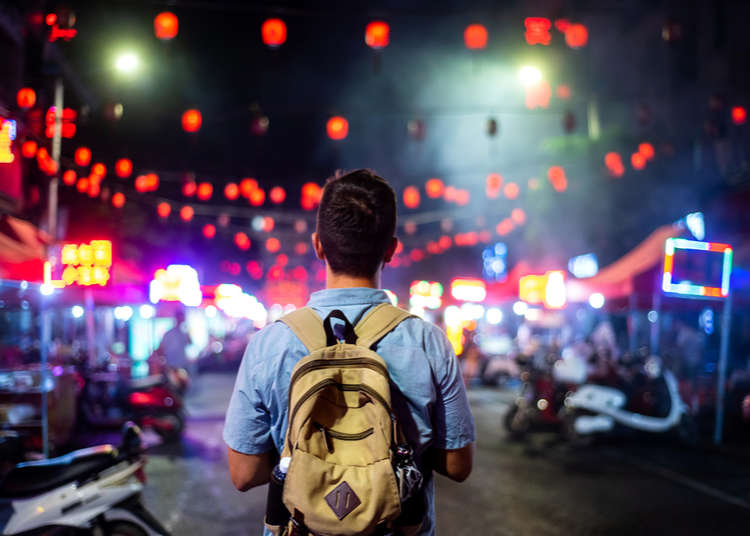
Tokyo 1 Day Itinerary: Best Sightseeing Spots the Guidebooks Won't Tell You!
- Written by: David McElhinney
Tokyo is busy old place, there's no getting around that. But if you're the kind of tourist who wants to venture away from the human herds, see the slightly less charted stretches of the city, and peer behind Tokyo's cultural curtain while you're at it, this could be the itinerary for you!
This is our guide for how you can spend a day in East Tokyo, immersing yourself in the city's historical and modern culture, while – most importantly – avoiding the bountiful crowds.
In this article:
・Preparation: Accommodation + Transport
・Morning
・Afternoon
・Evening
Preparation
Where to Base Yourself
For a hotel or other accommodations, consider the Shin-Okubo area. Sitting shoulder-to-shoulder with Shinjuku, Shin-Okubo is located in the heart of the city, and is surprisingly more affordable than its more renowned neighboring districts. In recent years it has gained a reputation as Tokyo's "Korea Town", due to a proliferation in the number of Korean restaurants and establishments located in the area. Plus, its proximity to Shinjuku means you will be well-connected by railways to the rest of the metropolitan area.
Tokyo Day Pass
This tour is pretty walking-intensive, and of course times and locations can be rejigged to align with your interests. For trains purchasing a Suica or Passmo card from machines inside train stations is a good idea. These are all-purpose cards, which give you access to all non-shinkansen rail lines in the city (and beyond). Using cash, simply add a balance to the card at the machine (including a 500 yen, refundable deposit)
Morning
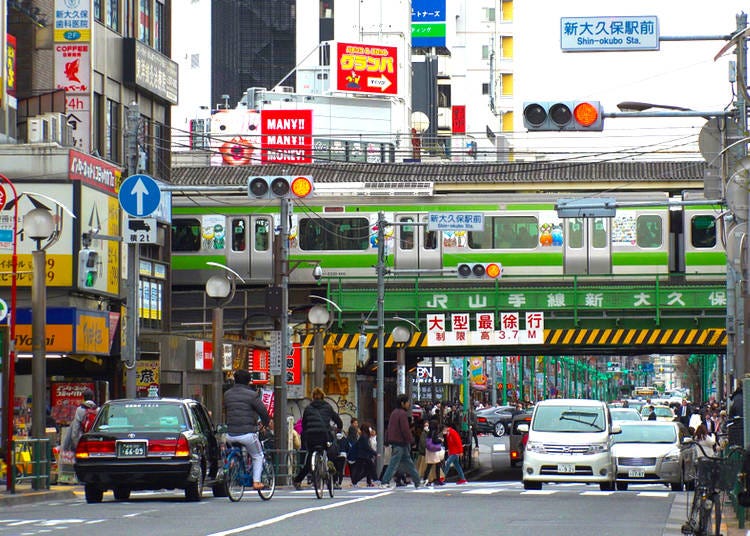
Shin-Okubo (9am – 10:30am)
Kick off your day with breakfast in Shin-Okubo. Wandering around the pedestrian alleyways splitting off from the main roads is your best bet. Your options here will abound, and naturally, the Korean joints serve up some particularly tasty bites. Myeongdong Norimaki is open around the clock. In here you can fill the hunger void with a quick combo of gimbap rolls and coffee.
Once your taste buds have been satisfied (and you've fulfilled your caffeine needs), check out what else Tokyo’s 'K-town' has to offer. Cosmetics and beauty products are particularly abundant, with stores like Tony Moly, Re:Make, and Itsskin operating as the fan favorites.
If you’re not into makeup and self-beautification, Seoul Market and Korean Hiroba are excellent Korean foods and goods stores. If you want to bring home some oriental spices, kimchi pastes or any of your favorite Korean confectionary, then you ought to peruse the shelves in one – or both – of these establishments.
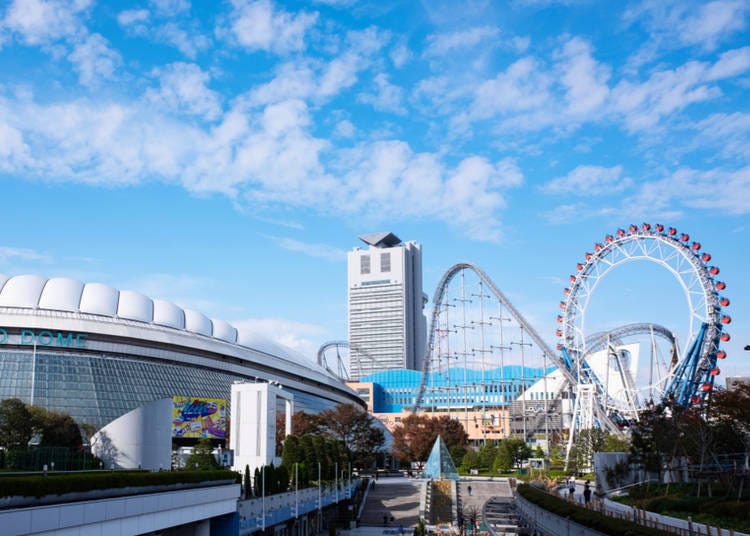
Tokyo Dome and Korakuen (10:30am – 1pm)
Now it's time to head to east Tokyo via the Oedo Line from Higashi Shinjuku station (located right beside Shin-Okubo). Take the 15-minute train to Iidabashi Station, followed by a 5/6-minute walk to Tokyo Dome.
Tokyo Dome is an all-purpose entertainment zone which opened its doors for the first time in 1998. The bulbous, pillowy roof is supported by cutting-edge air pressure technology and is quite a site to approach on foot. It's also home to the Yomiuri Giants baseball franchise, and the 55,000-capacity arena hosts frequent concerts and performances by local and internationally acclaimed artists.
While you're here, check out the Tokyo Dome miniature theme park and amusements, including: The Big O Ferris Wheel, the 'ONRYOU ZASHIKI' Haunted House, The Wonder Drop log plume, or the park's signature Thunder Dolphin rollercoaster. On top of that there are outlets for bowling, roller skating, and a museum where "the universe" is the central theme; all good rainy-day activities.
Tokyo Dome is also close to several other attractions. If you feel like indulging in some slightly more relaxed endeavors, consider the Spa LaQua hot spring facility for a bit R&R, or the Bunkyo Civic Center observation lounge where you can access exceptional (free) views of the Tokyo urban sprawl. Or you may wish to take a tranquil stroll through the Koishikawa Korakuen Gardens and its charming Kuhachiya Pavillion, which is a 3-minute walk from Tokyo Dome.
And if you need a quick bite before you make tracks to your next destination, there's the Moomin Bakery & Café – based on the eponymous, animated pop-culture icon from Finland – which serves fresh breads, northern European-style.
Afternoon
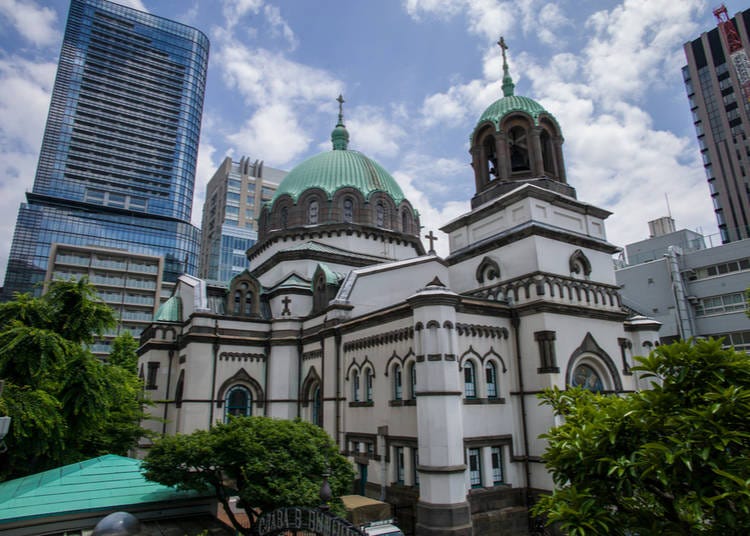
Ochanomizu (1pm – 2:30pm)
Next walk down to Ochanomizu which is about 20 minutes from the Tokyo Dome area (alternatively, you can take the 3-minute train from Suidobashi Station). There are several famous landmarks in Ochanomizu which are worth a peek. Hijiribashi Bridge, a saintly and arching bridge which looks not unlike a Roman aqueduct, was built as part of the reconstruction efforts following the Great Kanto Earthquake of 1923. Completed in 1930, the brickwork structure “links” the Confucian temple of Yushima Seido and the Holy Resurrection Cathedral.
The Holy Resurrection Cathedral, now the home of Japanese Orthodox Christianity, is a Byzantine-style cathedral with greying stone walls, green domes surmounted by spires, and windows of color-strewn stained glass. Even though it hides amid the surrounding skyscrapers, it's a clear architectural outlier in a city of relatively few ancient European influences, and is quite stunning in its own right.
Kanda Myojin Shrine may take your fancy too. The antiquated, spiritual structure of vermillion wood and a sloping, tiled roof dates back almost 1,300 years. It's a good alternative to Asakusa's Senso-ji Temple, which is suffering from frequent over-tourism. In May on alternating years the shrine welcomes the Kanda Matsuri, one of the three great Shinto festivals of Tokyo.
Next stop, Jimbocho.
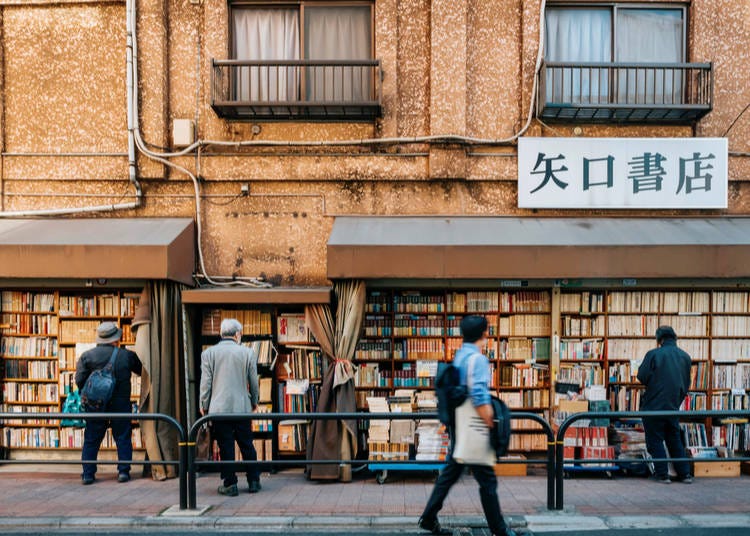
Jimbocho (2:30 – 4pm)
Jimbocho is about 1km on foot from Ochanomizu – walking is recommended. Jimbocho, Tokyo's resident town of literature and one of the city's epistemological centers, sits on the doorstep of the venerated Meiji University. The area is stocked to the rafters with book stores, some of which have been in business since the early 20th century. Many of the stores specialise in old Japanese academic tomes, but there is a helping of English book shops running the gamut from antiquarian to cheap and cheerful.
Kitazawa Shoten, one of Jimbocho's most famous stores, is all about grandeur, with an ornate, Victorian interior and a slew of titles from the greats of English literature bunched up on the polished oak shelves. Oshima Shoten however, is a store for the bargain hunters, with a constantly replenished stock of cheap English books, both classic and modern.
At Wonder leans more in the direction of pop-culture. In here, the shelves are piled high with classic comic books from obscure superhero titles to numerous entries from the Marvel and DC universes. And if you purchase a book, jump into Jimbocho Book Centre for some craft coffee, where you can read your literature of choice in peace and quiet with a tasty cup of joe.
The Jimbocho Book Fair is probably the highlight of the district's calendar. For around 10 days in mid-autumn (October 25 – November 4 in 2019), the shops spill out onto the streets, peddling their wares for reduced prices. The pedestrianized streets are also lined with stalls selling local food and drink, while live bands fill the air with the sounds of Jazz. If you're in Tokyo over those dates, it's not to be missed.
For food in the area, Ethiopia is a fine curry shop with, unsurprisingly, east-African inspirations. The queues of salarymen at lunchtime are a clear nod to the restaurant's quality. If you're in the mood for Japanese, Maruka Udon serves up some deliciously slurpy and thick udon noodles, accompanied by classic Japanese dipping broths.
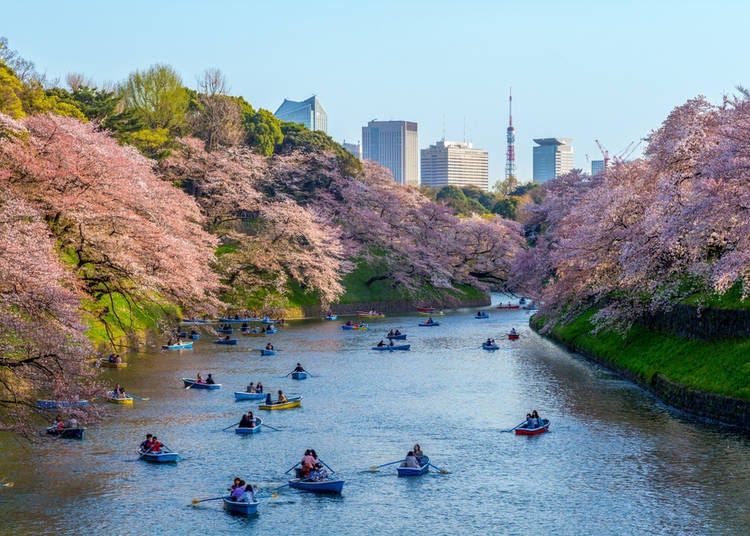
Kudanshita (4pm – 6pm)
After you've had your literary fill, head on over to Kudanshita, another 6/7-minute walk to the west. There are two excellent museums in the area: National Museum of Modern Art (Open 10am – 5pm), and Tokyo's Science Museum (Open 9.30am – 4.50pm; closed Wednesays). Contemporary art is currently in vogue in Japan, with stunning showcases like the Setouchi Triennale and teamLab exhibitions leading the artistic vanguard. The National Museum of Modern Art displays some of the finest modern art to be found in the city with impressionistic painting galleries and showrooms focusing on 3D design. For those interested in obscure architecture, check out the nearby Modern Art Crafts Gallery. Constructed with red brick walls and pale white cornices, it looks decidedly more Georgian that it does 21st century Japanese.
The Science Museum is a wonderful little institution in its own right too, featuring 4 floors of instructive science-themed exhibitions (with English translations). Cyberspace, atomic energy and motor vehicles are all brought to life through the museum's exhibits. And if you've got time to spare, you should go for a stroll through the surrounding Kitanomaru Park, with its broad greens, tranquil waterways, and the striking Yasukuni shrine. Or even rent a boat by Chidorigafuchi.
Evening
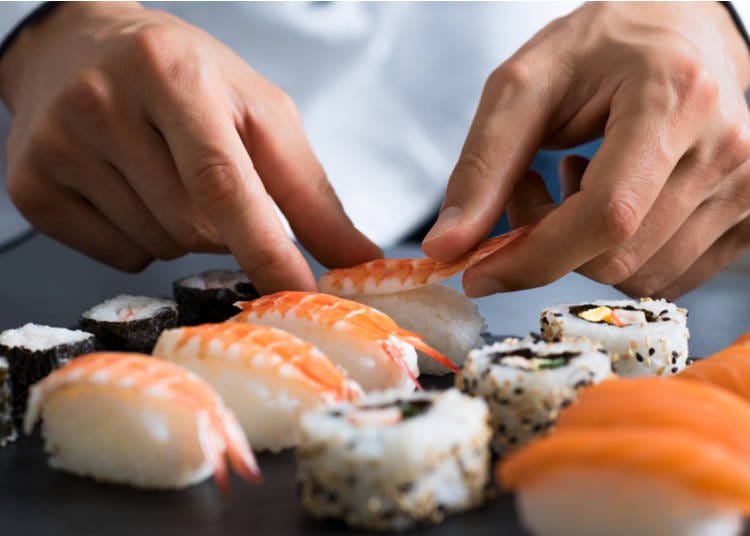
Akebonobashi (6pm – 8:30pm)
Akebonobashi is your next port of call, and much like Shin-Okubo, it's a slightly less 'discovered' neighborhood next to the glitzy district of Shinjuku. Take the Shinjuku Line from Kudanshita Station to Akebonobashi Station (4 minutes).
Akebonobashi is an old shitamachi (downtown) area, littered with funky, themed bars. Café & Bar Ninety is an ode to the last decade of the 20th century. Draped in 90's gaming memorabilia and rare pop-culture trinkets, this gaming den turned watering hole will strike a chord with the otaku out there. Consoles are available in the bar, but you're also encouraged to bring your own handhelds and to play with fellow patrons.
After you've quenched your thirst, sushi could be on the menu. Sushidokoro Shigeru is a fine little sushi shop and certainly worth your custom if you're partial to a bit of raw fish (reservations are recommended as there are only 7 seats in the shop). Starting from around 7,000 yen per person, it's very reasonable for a Michelin recognized restaurant (it won a 2018 Bib Gourmand, awarded to eateries of great value and quality). If you want something with more variety, check out Teishoku Sakaba Shokudo, a classic Japanese izakaya.
After dinner, if you've got the time and inclination, shoot on over to Akebonobashi Shotengai (shopping street). The street has a lively and colorful feel about it, especially in the evening when lit up a by a procession of cast-iron, tri-bulb lampposts.
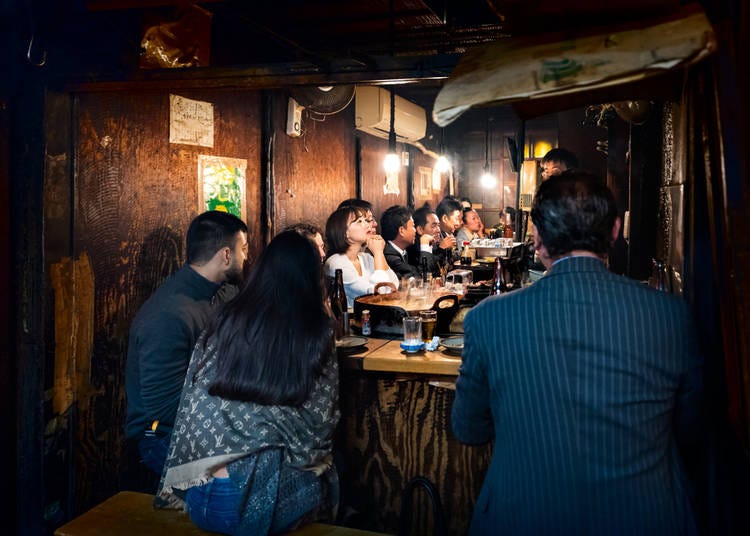
Shinjuku 2/3-chome (8:30pm - Late)
Now it's time to bring in the night with your poisons of choice in Shinjuku's 2- or 3-chome. Shinjuku is broken up into different blocks, or “chome”, and these two are epicentres of Tokyo nightlife, with a range of bars and nightclubs catering to people of all dispositions. To get here, either walk from Akebonobashi (20 minutes) or take the Shinjuku Line from Akebonobashi Station to Shinjuku-sanchome Station (2 minutes).
Beside Shinjuku 3-chome ("sanchome") you can find several interconnected pedestrian streets flanked by pubs, cocktail bars and finger food restaurants, with some great Japanese izakayas and buy-by-the-slice pizza joints. For drinks, 371 Bar has a decent selection of global wines and bar snacks, and the staff can whip up a pretty mean cocktail. It's great in the warm-weather months as the sliding doors open up the bar to the surrounding, bustling streets.
If you want something a little more refined however, Ben Fiddich is a great option. Though it's a little pricey (2,000 – 3,000 yen per drink), the cocktails are made with true craftsmanship, and the almost medieval interior of wooden beams, brickwork walls and low lighting provides a surprisingly cozy setting for sinking a few whisky sours.
You can't go to Tokyo without doing karaoke, and this should be your last stop for the night. Karaokekan, Pasela and Big Echo chains all have branches in the area, offering private rooms and reasonable all-you-can-drink ("nomihoudai") options. And they're open 24/7.
Alternatively, Shinjuku 2-chome ("nichome") is another late-night party area just next door to 3-chome. 2-chome is known as one of Tokyo's liveliest LGBTQ neighborhoods, as a host of "gay bars" spill out onto the streets in the small hours of the morning. Dragon Men and Arty Farty are two of the most popular nightclubs with packed dance floors, disco balls, electronic soundtracks and flowing drinks. But if the LGBT scene isn’t for you, don't worry there are plenty of other bars dotted around the block which a little more run-of-the-mill.
Calling it a Night
Once you're ready to hit the sack, a train, taxi or walk will bring you back to Shin-Okubo in short pretty order. If you follow this itinerary, you won't necessarily get to explore every nook and cranny of eastern Tokyo's hidden highlights, but you'll certainly have ticked off some of the best. Enjoy!
Recommended Hotels in Tokyo
The following budget-friendly hotels are in excellent locations for this itinerary.
-

-
Address
2-3-1 Yoyogi, Shibuya-ku, Tokyo, 151-0053
View Map -
Nearest Station
Shinjuku Station (JR Shonan Shinjuku Line / JR Yamanote Line / JR Chuo Main Line / JR Saikyo Line / Tokyo Metro Marunouchi Line / Toei Shinjuku Line / Toei Oedo Line / Keio Line / Keio New Line / Odakyu Odawara Line)
6 minutes on foot
-
Address
2-3-1 Yoyogi, Shibuya-ku, Tokyo, 151-0053
-

-
Address
1-23-1 Nishi Shinjuku, Shinjuku-ku, Tokyo, 160-0023
View Map -
Nearest Station
Tochomae Station (Toei Oedo Line)
6 minutes on foot
-
Address
1-23-1 Nishi Shinjuku, Shinjuku-ku, Tokyo, 160-0023
-

-
Address
2-2-1 Yoyogi, Shibuya-ku, Tokyo, 151-8583
View Map -
Nearest Station
Yoyogi Station (JR Yamanote Line / JR Chuo Main Line / Toei Oedo Line)
5 minutes on foot
-
Address
2-2-1 Yoyogi, Shibuya-ku, Tokyo, 151-8583
David is a Northern Irish freelance writer living in Tokyo. He loves living in Japan, reading about Japan, writing about Japan and eating Japanese food. He also spends a lot of time exercising, playing rugby and risking a litany of muscle-related injuries in yoga class.
- Area
- Category
*Prices and options mentioned are subject to change.
*Unless stated otherwise, all prices include tax.
Popular Tours & Activitiess
Recommended places for you
-

Keisei × Keikyu 16-Temple Goshuin Tour: Discover Deeper Tokyo & Yokohama
by: Guest Contributor
-

New Seibu L00 Series Launching in 2026! What to See Along the Tokyo-Area Golden Route
by: Guest Contributor
-

Get Ready to Catch 'Em All! First Ever Permanent Outdoor Pokémon Park Opening Near Tokyo!
-

The Best Japanese Food Representing 2025! 'Dish of the Year®' Annual Award Results Announced
-

A Travel Game Changer! Go Hands-Free Between Tokyo and Kyoto with LUGGAGE EXPRESS by JTB and JR Tokai
by: Guest Contributor
-

Don't Miss Out! The One Thing You Must Do Before Shopping at Mitsui Shopping Park LaLaport: Get Your Max 10% OFF Coupon Book
Inspiration for Accommodations
-

Enjoy Mt. Fuji from the Comfort of Your Room! Recommended Ryokan with Mt. Fuji View
-

Stay Near the Cherry Blossoms! Hotels for Cherry Blossom Viewing in Tokyo
-

Family-Friendly Hotels with Free Shuttle to Disneyland: Convenient Access for a Magical Stay
-

Top Ranked Hakone Hotels with Mt. Fuji View: Enjoy Stunning Scenery from Your Private Space
-

Convenient Tokyo Hotels with Airport Shuttle: Ideal for Families and Heavy Luggage
-

Stunning Tokyo Tower View Hotels: Enjoy Spectacular Scenery from Your Private Space
-

Convenient Asakusa Hotels with Kitchens: Ideal for Extended Family Visits
-

Experience Luxury: Hakone's 10 Best Five-Star Accommodations
-

Enjoy Mt. Fuji Autumn Leaves! Top Hotels Near the Popular Autumn Leaves Corridor
-

Experience Hakone Fall Foliage from Your Room with Stunning Views
-

The Ultimate Guide to Ueno (Tokyo): From Cherry Blossoms to Pandas
by: Cassandra Lord
-

Sumida River Cruise & Tokyo Bay Cruise: Enjoy Sightseeing and Dining on Tokyo's Beloved Waterway (+Cherry Blossom Tours & Tickets)
-

Visiting Tokyo: The Ultimate Asakusa and Odaiba 1-Day Itinerary
by: Matt Vachon
-

Numazuko Kaisho in Ueno: Good Quality, All-You-Can-Eat Seafood for Just US$12!?
-

Easy Day Trip from Tokyo! Ultimate Sightseeing Guide for Hakone & Lake Ashinoko!
-

Meiji Shrine (Meiji Jingu): Exploring the Sacred Sanctuary of Peace in Bustling Tokyo
- #best ramen tokyo
- #what to buy in ameyoko
- #what to bring to japan
- #new years in tokyo
- #best izakaya shinjuku
- #things to do tokyo
- #japanese nail trends
- #what to do in odaiba
- #onsen tattoo friendly tokyo
- #daiso
- #best sushi ginza
- #japanese convenience store snacks
- #best yakiniku shibuya
- #japanese fashion culture
- #best japanese soft drinks



















